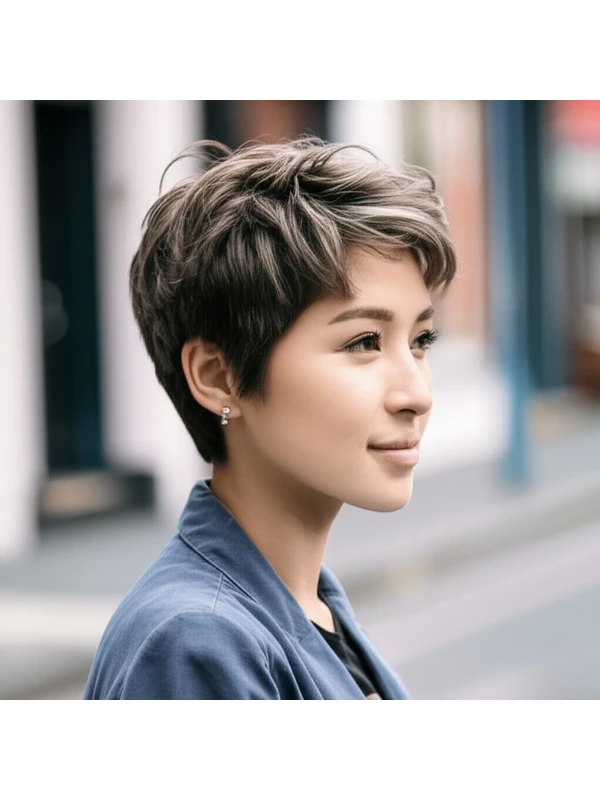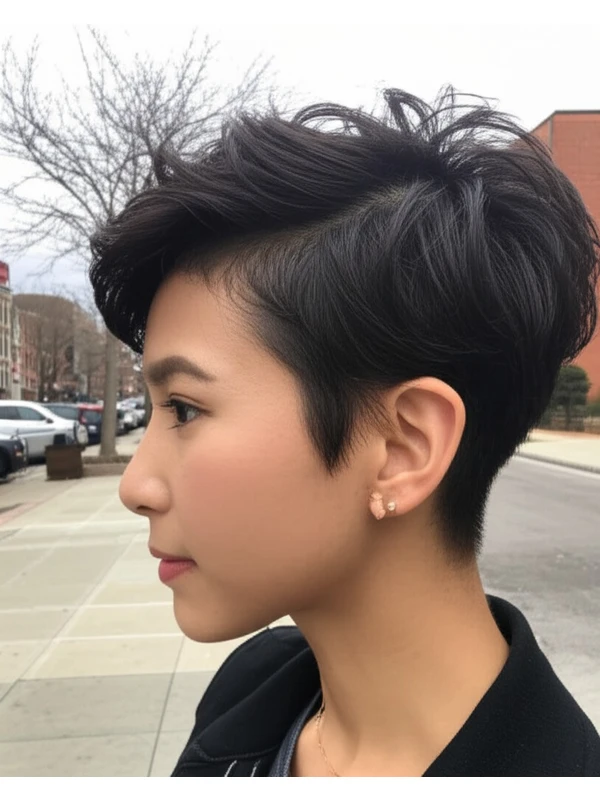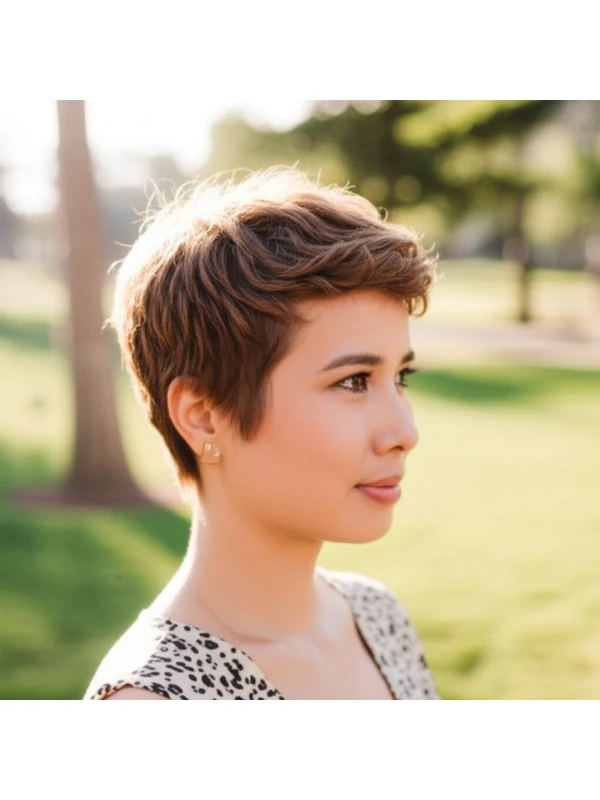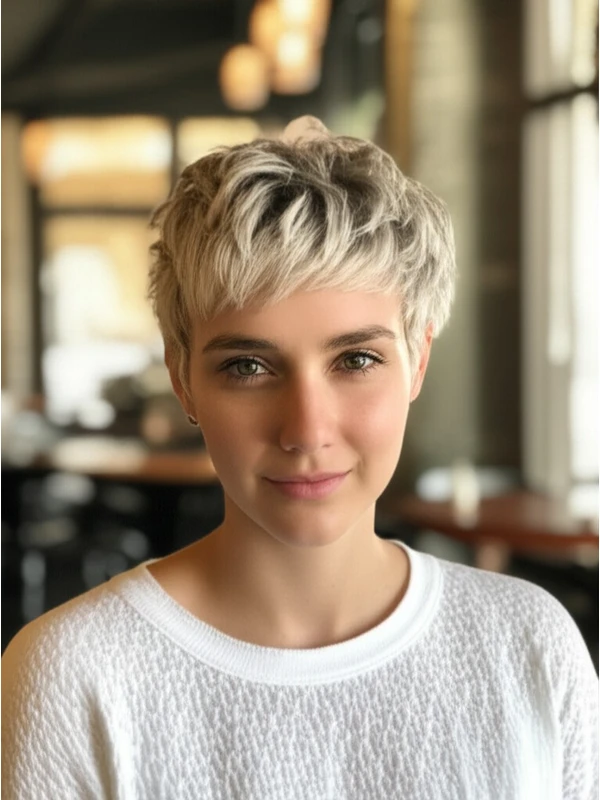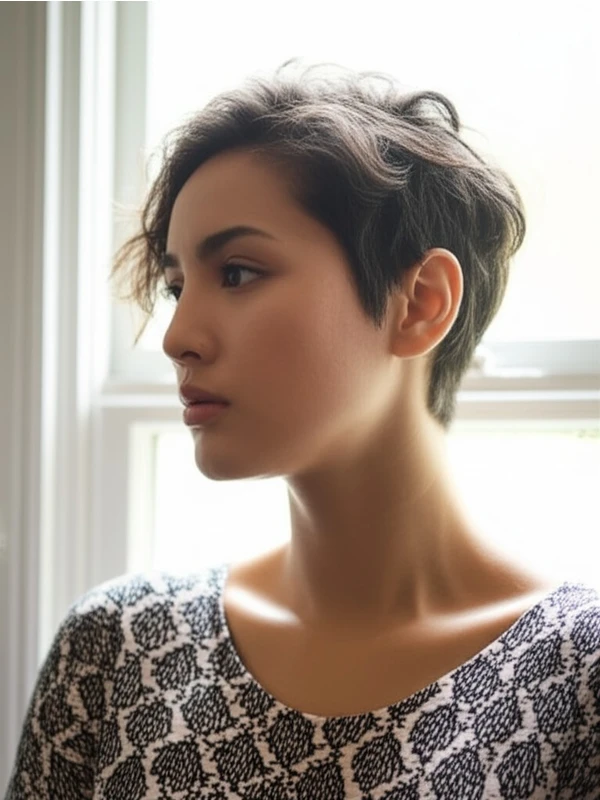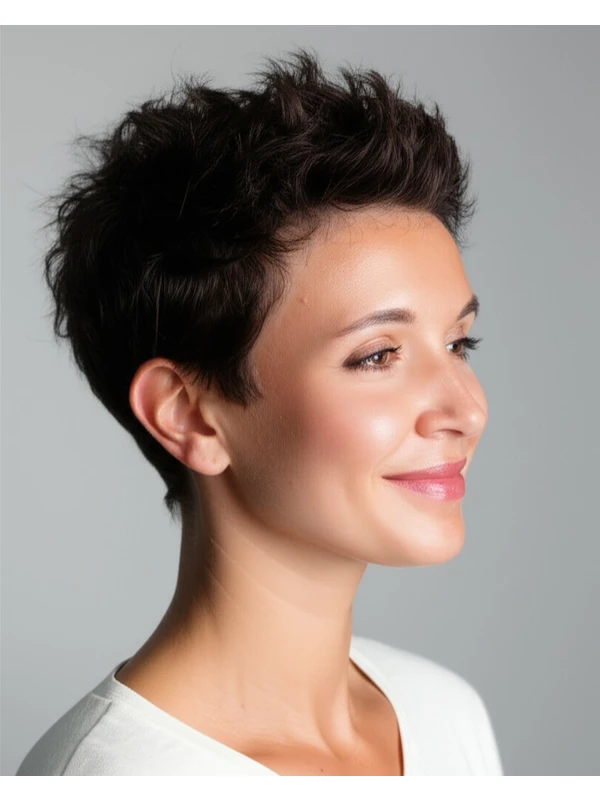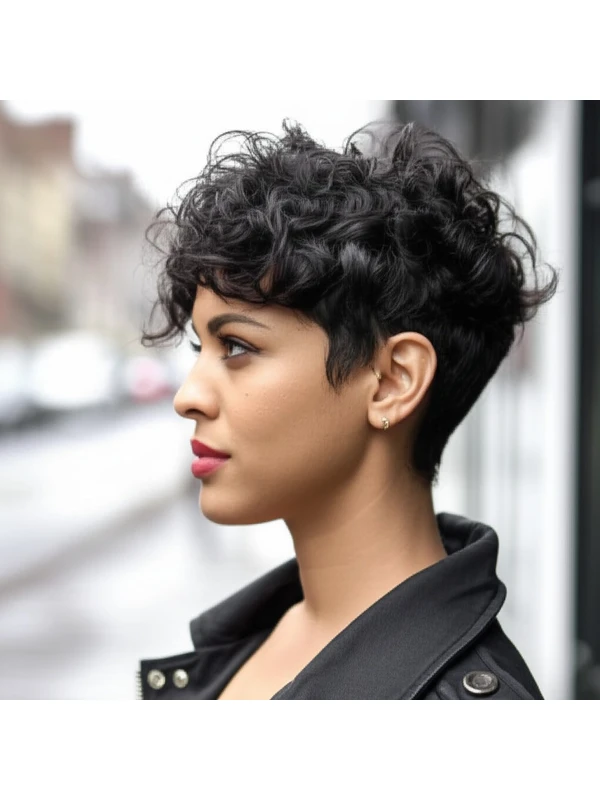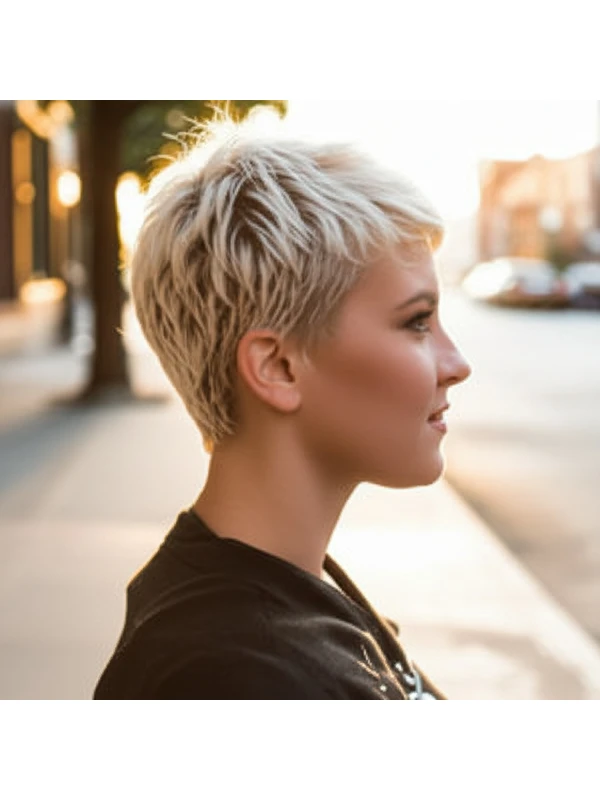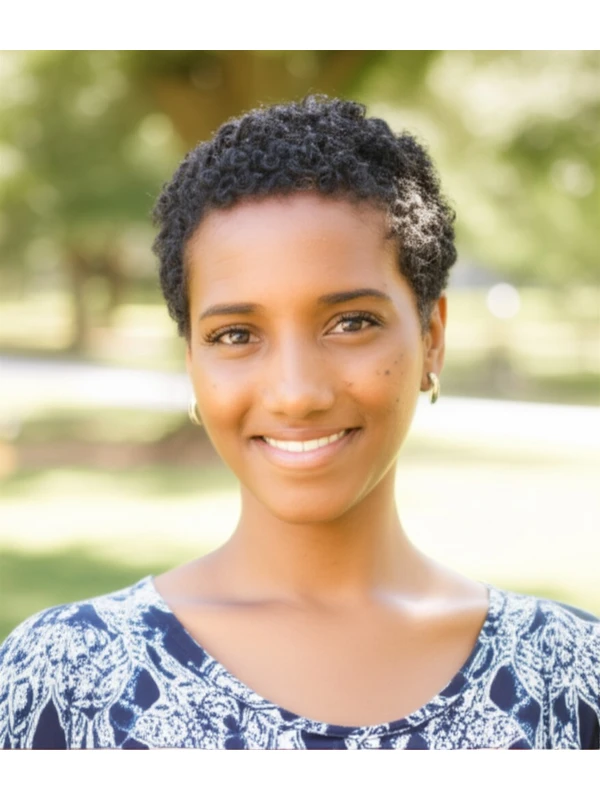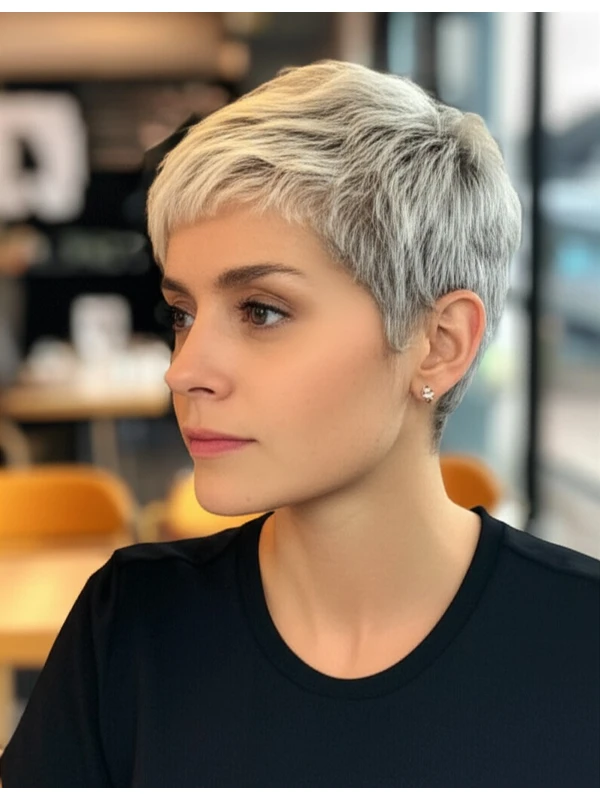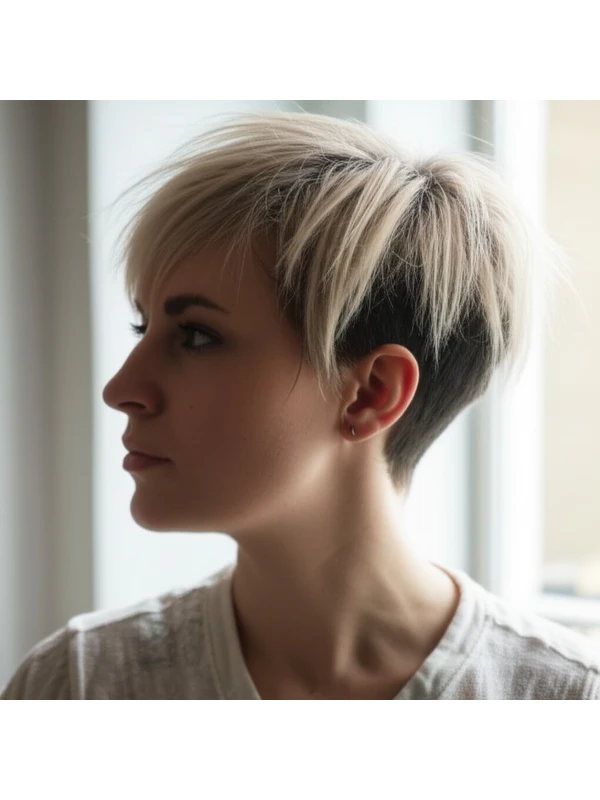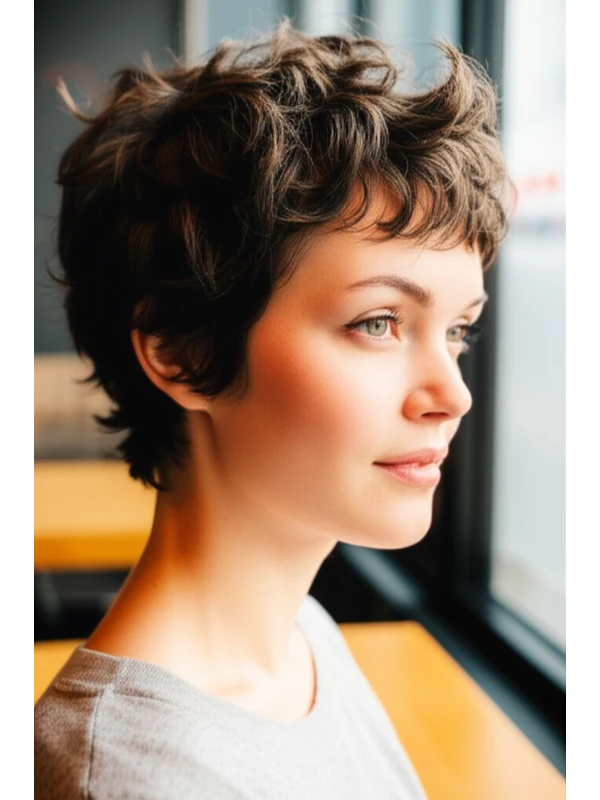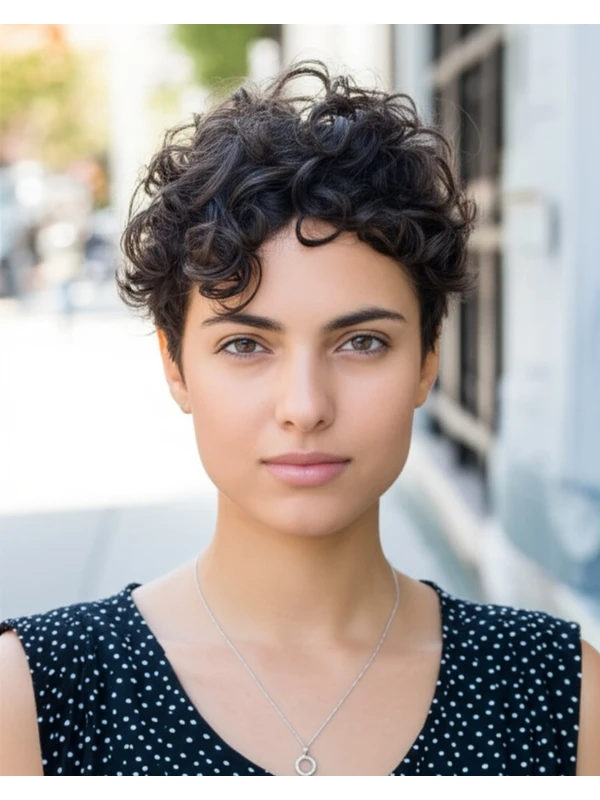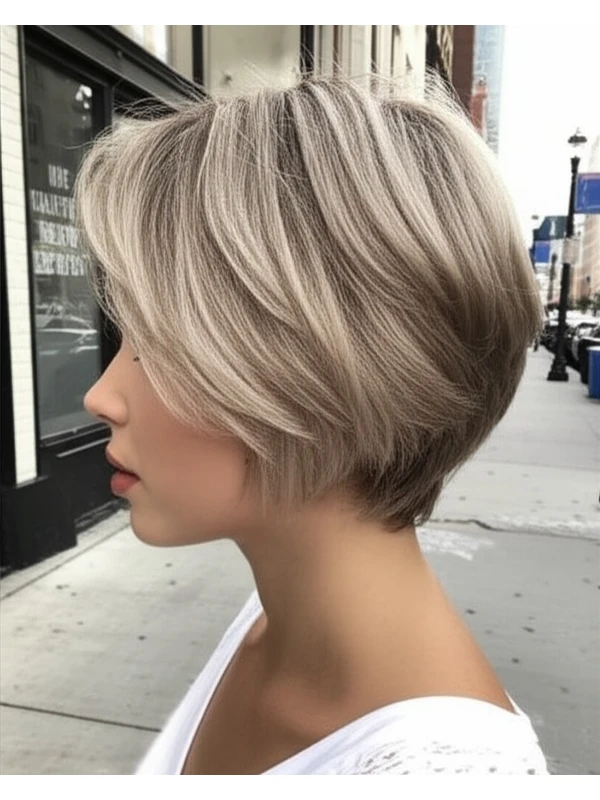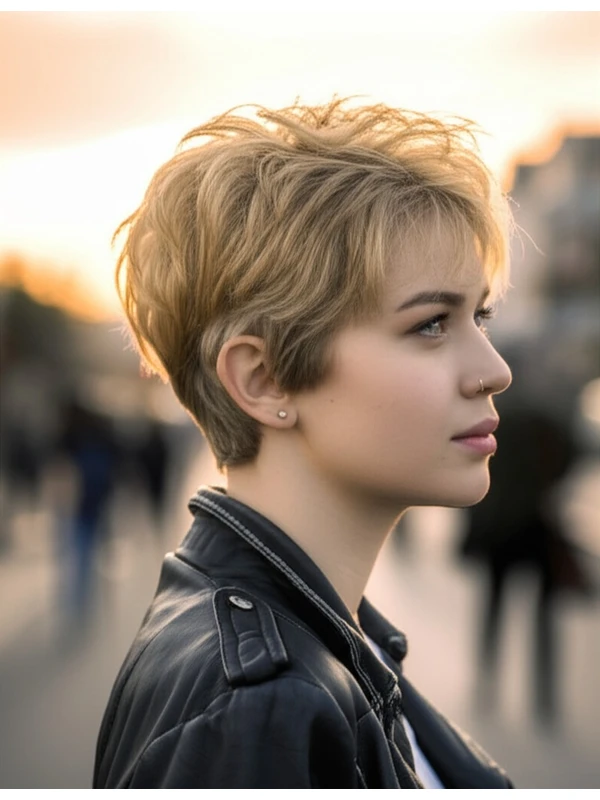#The Textured Pixie: A Modern Classic
The textured pixie is a hugely popular short hairstyle for good reason – it’s chic, playful, and surprisingly versatile! But before you take the plunge, let's break down everything you need to know about this modern classic.
#1) Background & Definition: What Is a Textured Pixie?
The textured pixie is essentially a very short haircut with layers that create movement and visual interest. Think of it as an evolution from the traditional, super-sleek pixie cut. The key difference lies in the intentional choppiness – pieces are often point-cut (snipped at angles) to soften lines and add texture.
- Cut Geometry: It’s typically shortest at the nape of the neck and around the ears, gradually lengthening towards the crown. Layers throughout create volume and shape.
- Key Features: Choppy layers, face-framing pieces (often a fringe or bangs), soft edges, and a generally undone feel.
- Typical Length Ranges: Generally 1–3 inches long on top, shorter around the sides and back. This can vary significantly depending on personal preference and hair texture.
- Alternative Names: Textured crop, layered pixie, messy pixie, modern pixie.
#2) Face Shape Fit: Finding Your Perfect Angle
The textured pixie is surprisingly flattering for many face shapes! The key is adjusting the length and placement of layers to balance your features.
- Oval Faces: Lucky you! Almost any variation of the textured pixie will work beautifully on oval faces. Play with fringe options – a wispy, side-swept bang or a more blunt, straight-across style both look great.
- Round Faces: Height is your friend! Ask for layers that add volume at the crown to elongate your face. Avoid styles that are too round or flat around the cheekbones. A longer, angled fringe can also help slim the face.
- Square Faces: Soften those angles! Layers strategically placed around the jawline will diffuse sharpness. A side-swept fringe is particularly flattering. Avoid blunt bangs which can accentuate a square shape.
- Heart Faces: Balance your wider forehead with layers that frame the face and soften the upper portion. A textured, piecey fringe helps to draw attention downwards towards your chin.
- Diamond Faces: Show off those cheekbones! The pixie highlights angular features beautifully. Consider a slightly longer style with side-swept bangs for added softness.
- Oblong (Long) Faces: Width is key here. A fuller, more voluminous textured pixie will help make your face appear wider and shorter. Avoid styles that are pulled too tightly back or have excessive height at the crown.
#3) Body Proportions & Height Guidance: Styling for Your Silhouette
The way a textured pixie impacts your overall silhouette depends on your body type and proportions.
- Petite: A shorter, more cropped version with minimal volume will prevent you from looking overwhelmed by the style.
- Average: You have the most flexibility! Experiment with different lengths and volumes to find what suits you best.
- Tall: A slightly longer pixie with added height at the crown can balance your height and create a more proportional look.
- Narrow Shoulders: Volume on top will broaden your shoulders visually. Layering around the face helps too!
- Broad Shoulders: Avoid styles that add excessive volume directly above the shoulders, as this can make them appear even wider. Keep the sides relatively close and streamlined.
- Short Neck: Height at the crown is crucial to elongate the neck. A slightly longer fringe can also help.
- Long Neck: You can pull off a shorter pixie with more volume – it balances your proportions beautifully!
#4) Works Best With Hair Types & Densities: Texture Matters
The textured pixie isn't just for one hair type—it’s adaptable, but understanding your hair is key.
Straight Hair: Texture is essential. Ask your stylist to point-cut the ends and add lots of layers to prevent a flat, lifeless look.
Wavy Hair: The pixie loves waves! Embrace natural texture with minimal styling.
Curly/Coily Hair: This style can be stunning on curls and coils, but shrinkage is critical. What looks like 3 inches in the salon might end up being only 1-2 inches once dry. Communicate this to your stylist! Layers are key for definition and bounce.
Fine Hair: Texturizing is a must to create volume. Shorter layers work best.
Medium Hair: You’ll likely achieve the most balanced look with medium layering throughout.
Thick Hair: Lots of layers will remove weight and prevent the style from looking bulky. Thinning shears might be used by your stylist for even more lightness.
- Shrinkage Tip (Curls/Coils): Always have your stylist cut your hair dry, in its natural state, to account for shrinkage!
#5) Styling Variations: From Casual Cool to Evening Glam
The beauty of the textured pixie is its versatility.
- Sleek vs. Textured: Use a smoothing serum and flat iron for a sleek look or embrace your texture with sea salt spray or curl cream.
- Middle vs. Side Part: A side part adds softness and asymmetry, while a middle part can be more modern and edgy.
- Fringe Variations: Wispy bangs, blunt bangs, choppy fringe – the possibilities are endless!
- Occasion Styling:
- Casual: Air-dry with texturizing cream or sea salt spray.
- Office: A slightly sleeker style with a side part and minimal flyaways.
- Evening: Add shine serum for a polished look, or use pomade to create more defined pieces.
#6) Maintenance: Keeping Your Pixie Fresh
Regular trims are essential!
- Trim Cadence: Every 4-6 weeks is typical. Curly/coily hair may require slightly less frequent trims (every 6-8 weeks).
- At-Home Routine: Wash and style 2-3 times a week.
- Heat vs. Air Dry: Minimize heat styling to protect your hair’s health. When using heat, always use a heat protectant!
- Product Checklist:
- Shampoo & Conditioner: Lightweight formulas are best.
- Leave-In Conditioner: Especially important for dry or curly/coily hair.
- Styler: Texturizing cream, pomade, wax, mousse – choose based on your desired look and hair type.
- Finishing Spray (Optional): For hold and shine.
- Estimated Daily Styling Time: 5-15 minutes, depending on styling complexity.
#7) Grow-Out Roadmap: From Pixie to… What?
The textured pixie evolves gracefully as it grows out!
- Months 1-3: The shape is most defined. Regular trims are crucial to maintain the style.
- Months 3-6: Layers start to blend together. You can experiment with slightly longer styles or a more relaxed fringe.
- Maintaining Shape: Ask your stylist for face-framing layers and subtle shaping between cuts.
#8) Color Pairings: Enhancing Your Pixie’s Dimension
Color elevates the textured pixie!
- Cool Undertones (pink, blue): Icy blondes, silver tones, ash browns.
- Warm Undertones (yellow, gold): Honey blondes, copper reds, golden browns.
- Low-Commitment Options: Balayage or highlights can add dimension without a full color change. Root smudging creates a softer grow-out.
#9) Season & Occasion Guide: Styling for Every Moment
- Spring/Summer: Embrace lighter textures and brighter colors. A messy, undone look is perfect for warm weather.
- Fall/Winter: Add warmth with richer tones and use styling products that provide more hold to combat static.
- Work: Sleek and polished styles convey professionalism.
- Weddings/Parties: Experiment with volume and texture – a little extra sparkle never hurts!
#10) Cost & Time: Salon Realities
- Salon Time: Typically 45-90 minutes, depending on complexity of cut and color services.
- Estimated Price Range: Relatively moderate—expect slightly higher than a basic trim but less than more complex cuts or full coloring.
#11) Pros & Cons: The Honest Truth
Pros: Chic, versatile, low-maintenance (with regular trims), highlights your features, can be flattering for many face shapes. Cons: Requires frequent salon visits, styling time can vary depending on desired look, not ideal for those who prefer long hair.
#12) Salon Consultation Script: Your Questions Answered
Use these prompts to guide your conversation with your stylist!
- "I love the textured pixie look – could you show me some inspiration photos?"
- “What length would be most flattering for my face shape?”
- "How will this style work with my natural hair texture and density?"
- “Can we discuss how to account for shrinkage if I have curly/coily hair?”
- "What styling products do you recommend, and can you show me how to use them?"
- "How often will I need trims to maintain the shape?"
#FAQs: Your Burning Questions Answered
- Is a textured pixie difficult to style? It depends on your skill level! Some variations are very easy (air-drying), while others require more effort and product knowledge.
- Can I do this myself at home? Trimming is best left to professionals, but styling can definitely be done at home with practice.
- Will the textured pixie make my hair look thinner? If you have very fine hair, strategic layering can create the illusion of volume.
- What if I don't like bangs? The textured pixie doesn’t require bangs – it can be just as stylish without them!
- How long will it take to grow out from this style? Growing out a pixie takes time and patience—expect several months (6+).
- Can I add highlights or lowlights to the textured pixie? Absolutely! Color enhances the dimension and visual interest of this cut.
